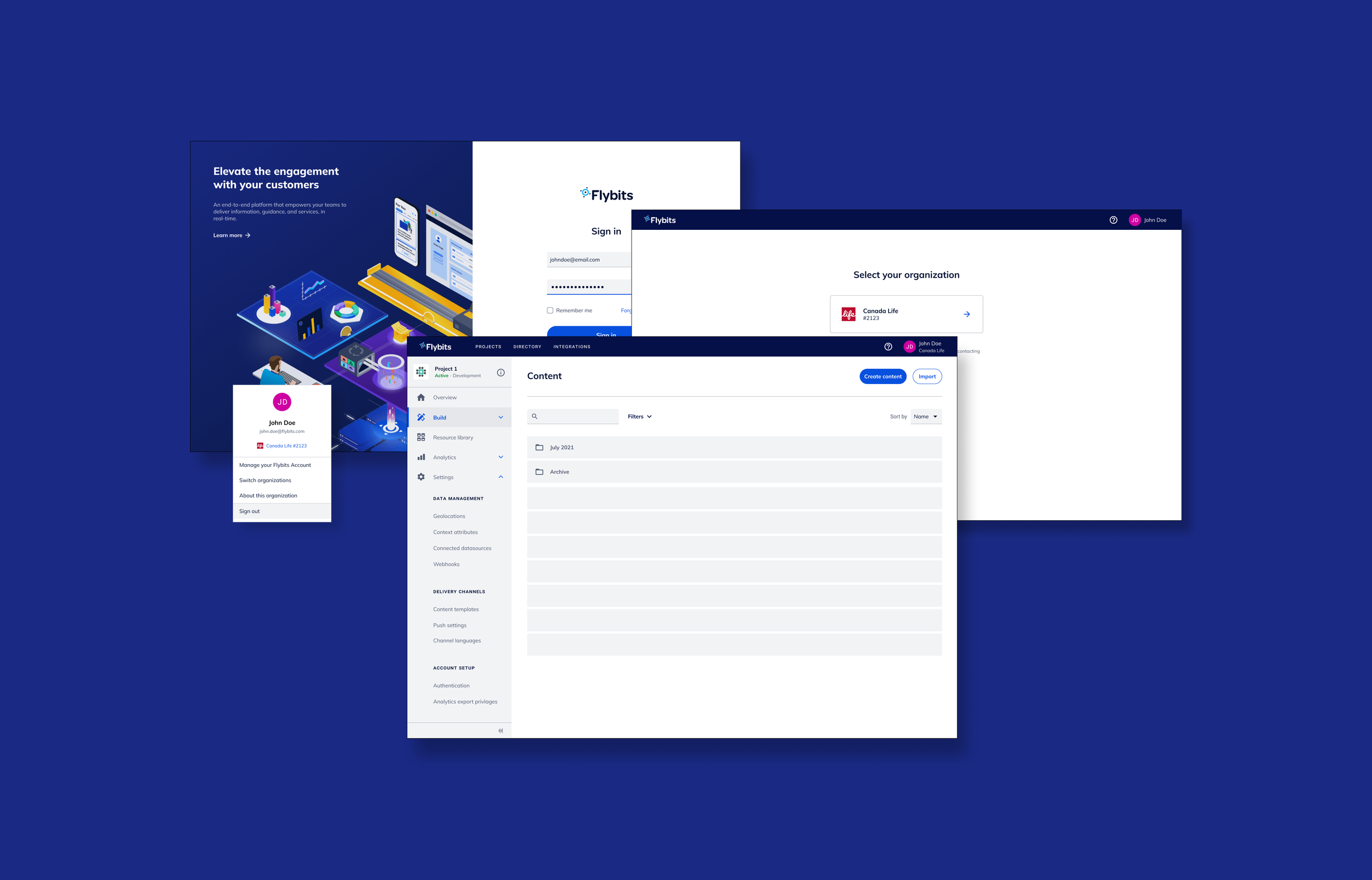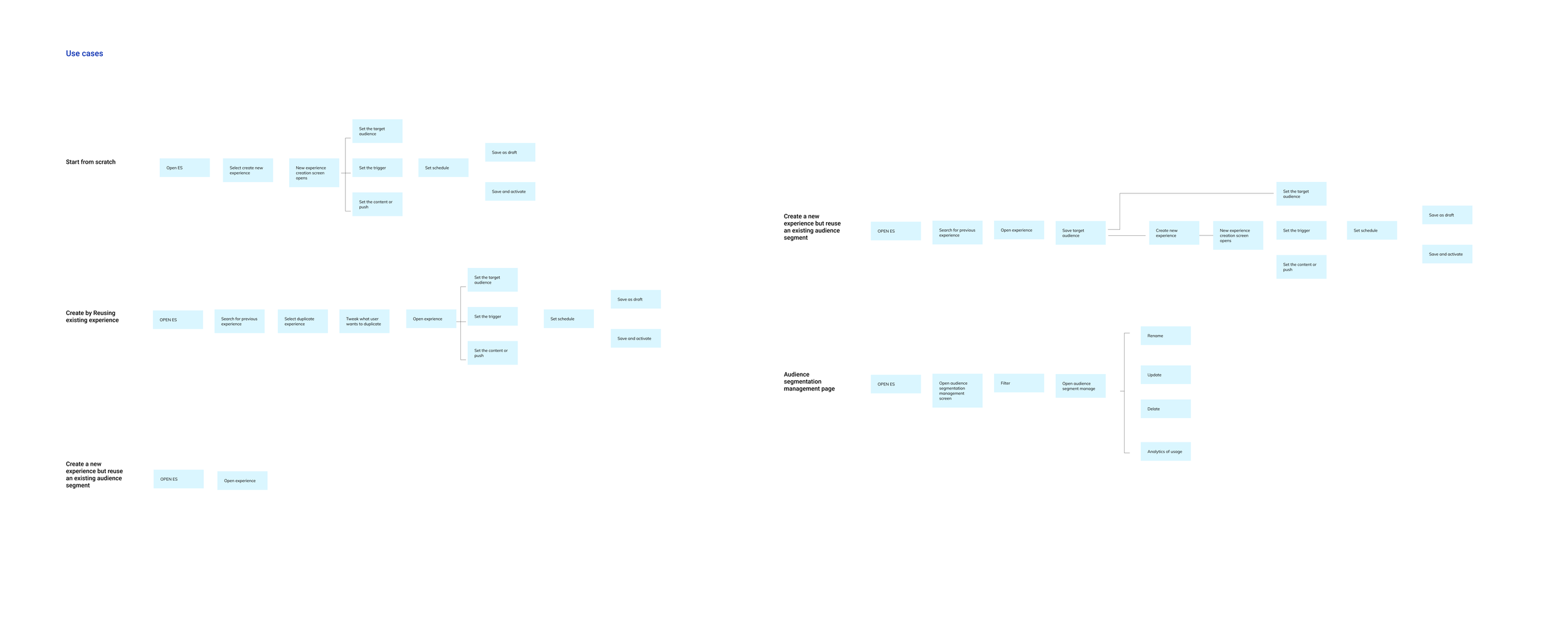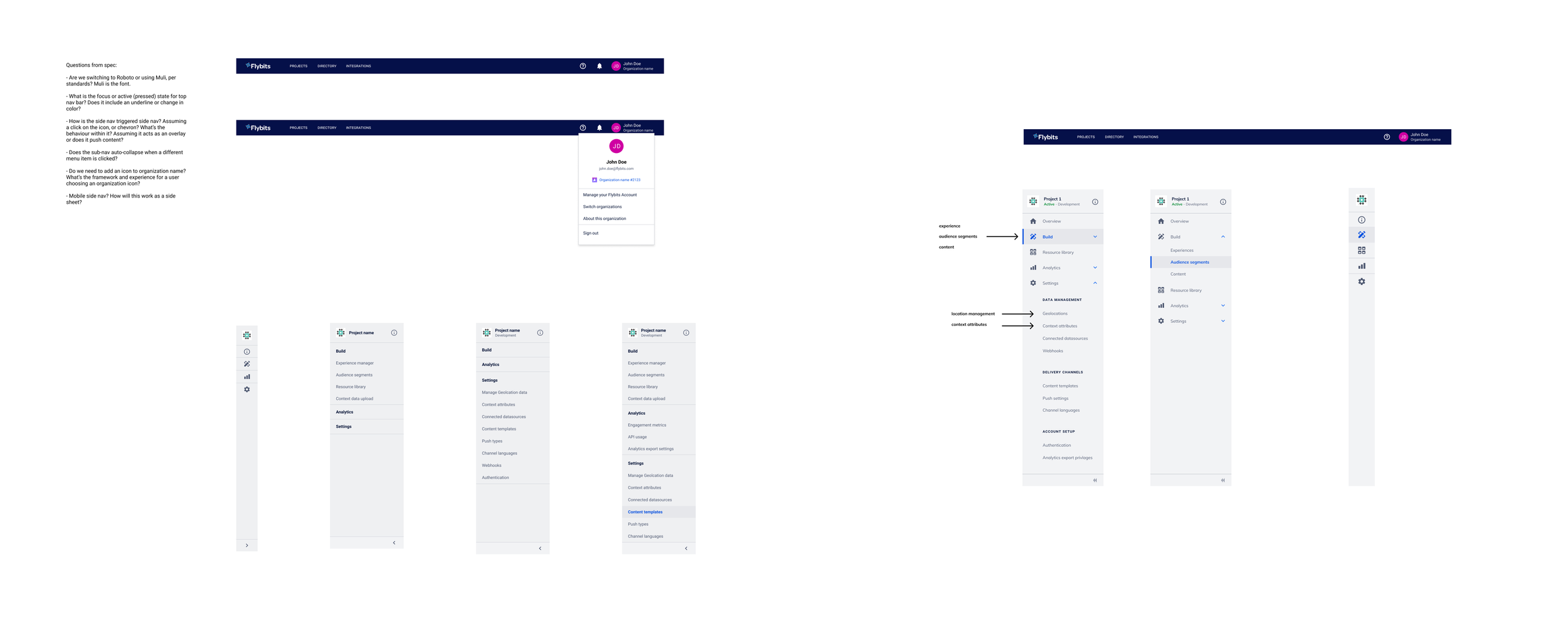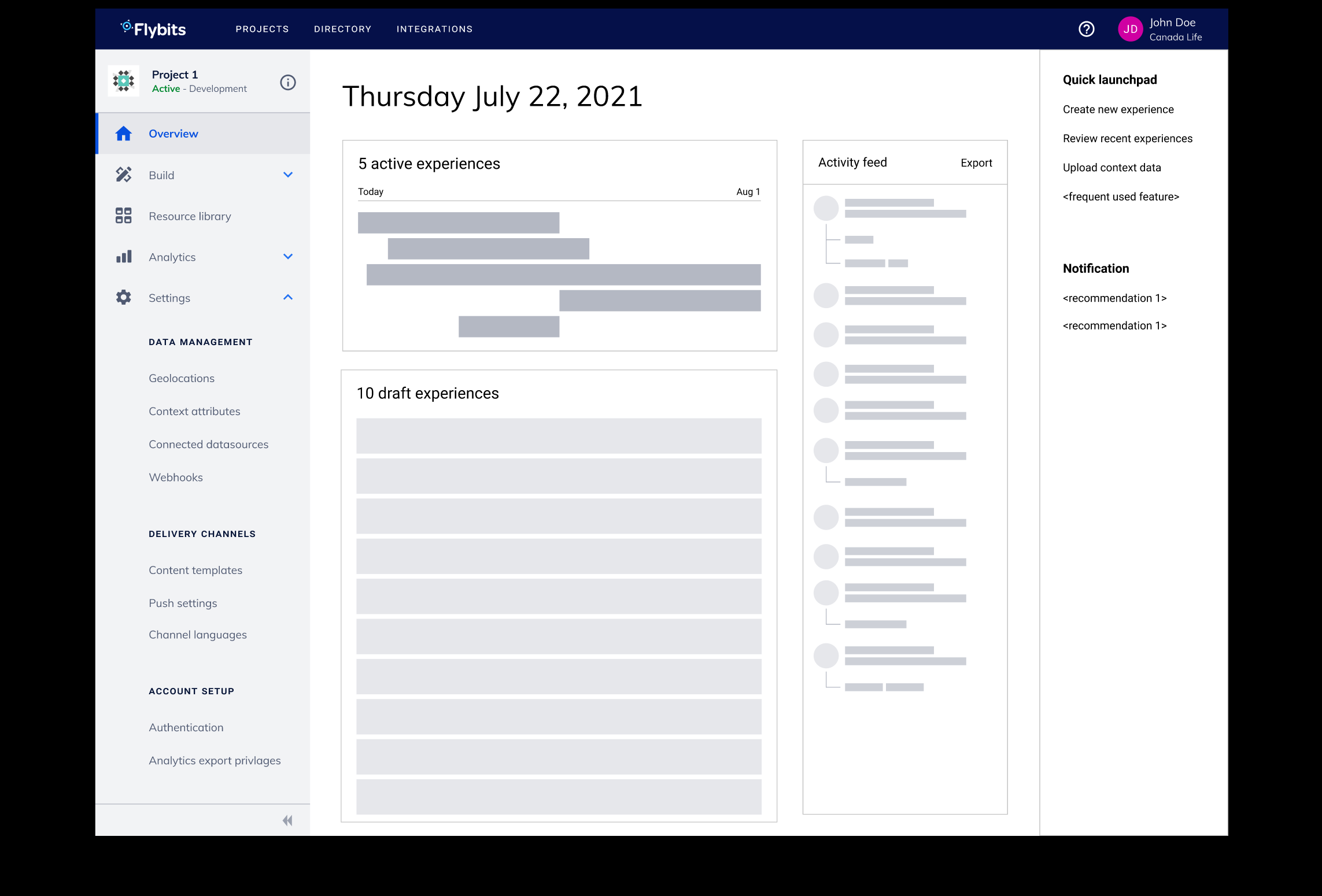
Company
Flybits is a B2B platform that empowers financial institutions (banks and credit unions) to engage customers at scale through data-driven delivery and personalized recommendations, offer, and advice.
My Mandate
Design tools that merge Flybits’ two core platforms, making workflows seamless and features easy to find for both marketers and developers.
Project: Global Navigation
Flybits operated two distinct platforms:
Experience Studio: Used by marketers to configure, manage, analyze, and activate campaigns.
Developer Portal: Used by developers to import/export data, configure databases, and manage integrations.
While each served different roles, their separation created friction for clients who needed to move between them to complete workflows. The Global Navigation initiative merged these platforms into a unified, intuitive system — giving users access to everything they needed without platform-switching.
Problem: What’s not working
Navigating between Experience Studio and Developer Portal was slow, unintuitive, and inconsistent. The impact:
Fragmented workflows: Users had to switch platforms to complete a single campaign, creating unnecessary friction.
Poor feature discoverability: Frequently used tools were buried, making them hard to locate.
Misaligned user needs: Power users demanded deep customization, while casual users needed quick, simple access.
Operational inefficiency: The lack of a unified system slowed campaign launches and increased support demand.
Approach: How the solution took shape
1. Research & Discovery
To understand the complexity of merging Experience Studio (marketer-focused) and Developer Portal (developer-focused), I partnered with PMs, UX Researchers, Content Strategists, and Engineers to map the full journey for both user types. Research activities included:
15 stakeholder interviews with client success teams, bank customers, and internal PMs.
Usage analytics review to identify high-traffic features, neglected areas, and common entry points.
Direct observation sessions to validate pain points in campaign setup, database configuration, and content activation.
Key insight: User needs fell into two clear groups:
Power users seeking deep configurability and advanced controls.
Casual users prioritizing speed, simplicity, and minimal clicks to action.
2. Information Architecture
I designed an intuitive information architecture to unify Experience Studio and Developer Portal into a single, cohesive system.
Navigation clarity: Established clear top-level categories for marketers and developers, reducing cognitive load when switching contexts.
Workflow streamlining: Removed redundant steps and consolidated fragmented entry points to minimize context switching.
Filtering & sorting logic:
Used specific, unambiguous filters (e.g., Category, Date) to help users locate content quickly.
Applied sorting options for broader attributes (e.g., Location, Notification type, Trigger method) to fine-tune results.
Journey validation: Mapped end-to-end flows for core tasks like campaign creation, event discovery, and data integration to ensure all high-traffic paths were optimized.
3. Ideation & Prototyping
With the navigation framework in place, I explored how to support both casual and power users without overcomplicating the initial experience.
Simple first, scalable later: Began with a streamlined framework that addressed the most common, high-value workflows for the majority of users, then planned to iteratively add vertical-specific features based on insights from partner banks.
Use-case mapping: Defined four primary workflows (event discovery, search, experience creation, and template use), ensuring each had a clear, predictable path in the navigation.
Rapid prototyping: Built low- to mid-fidelity interactive prototypes to test navigation logic quickly with bank customer support teams.
Feedback loops: Incorporated user feedback on clarity, speed, and discoverability into subsequent iterations.
Outcome: Delivered a navigation UI that immediately surfaced the most-used sections, reducing clicks and eliminating unnecessary platform switching.
4. Design System Integration & High-Fidelity Design
To ensure scalability, I collaborated with the Flybits design system team to unify patterns, components, and interaction rules across both marketer and developer experiences.
I translated validated prototypes into high-fidelity designs that:
Anchored critical workflows in a persistent global navigation bar.
Balanced marketer and developer priorities while maintaining simplicity.
Met accessibility standards for color contrast, keyboard navigation, and touch targets.
5. Self-Serve Enablement & Implementation
While navigation was the focal point, the real business goal was enabling Flybits’ clients — particularly bank digital teams — to operate independently. Customers are only one half of any marketplace; to grow the Flybits ecosystem, clients needed to scale their own end-consumer experiences without constant oversight.
I designed a fully self-serve model that:
Delivered parity across desktop and mobile for campaign and data management.
Allowed banks’ digital teams to configure and launch experiences without engineering or support intervention.
Created a scalable foundation for vertical-specific features, which could be layered in over time without disrupting the core experience.
The result was a client side that became fully self-sufficient, reducing the load on support teams while enabling banks to serve end-consumers in multiple countries seamlessly.
Results & Impact
The Global Navigation initiative transformed two siloed platforms into one seamless, intuitive system — increasing efficiency, discoverability, and client autonomy.
Unified workflows: End-to-end campaign creation, data integration, and activation completed without switching platforms.
Faster execution: Key tasks completed up to 35% faster.
Improved discoverability: Frequently used tools surfaced in top-level navigation increased adoption by 20%.
Reduced support load: Navigation-related support tickets dropped by 40%.
Scalable growth: Banks could independently create, manage, and launch mobile promotion experiences to end-consumers across global markets.






